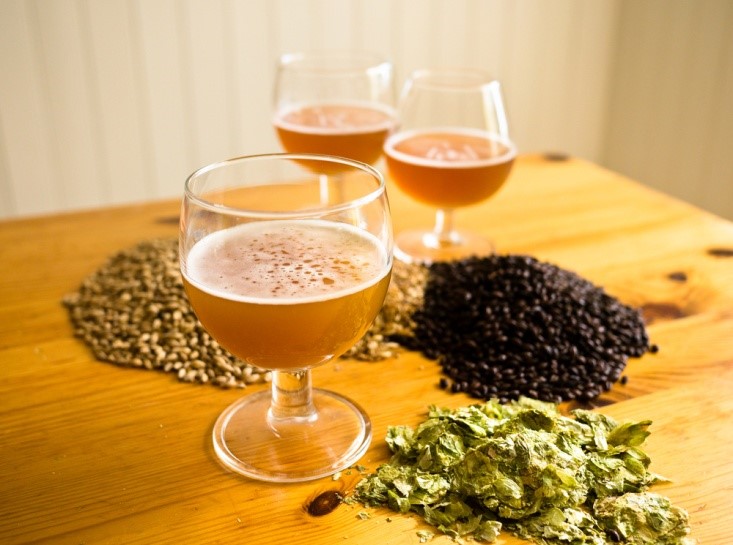Love brewing? Know your water first!

By Akshay Jain, Graduate Student in Civil and Environmental Engineering, Virginia Tech, Water INTERface IGEP Program
Whether you brew like a monk or are a greenhorn at the craft of brewing, it is of prime importance to know your water source! While the assumption that “If your water tastes good, you can brew with it” may not always be applicable, the inverse, “If your water tastes bad, you can’t brew with it”, is always applicable. This, and much more was discussed about the characteristics of water used in brewing in the Water for Health seminar (GRAD 5414) at Virginia Tech.
Before diving into the topic of water, which is the major constituent (read >90%) in beer, let’s get a brief overview of everyone’s favorite beverage. Beer’s history goes back to the time of start of civilization and agriculture. However, the oldest documented evidence dates back to six thousand years ago, to the ancient civilization of Sumeria. By 2000 BC, Babylonians were already brewing 20 varieties of beer. The value of beer can be understood by the fact that it was sometimes used to pay workers as part of their daily wages. Egyptians brewed beer for royalty, medical purposes and even it was included in burial provisions for the afterlife. In the Middle Ages, and even beyond, drinking beer was considered safe compared to drinking water due to poor sanitation. With the “cooking” process of beer, most of the harmful micro-organisms were eliminated.
The Germans started brewing beer by 800BC. However, the art of brewing became a mass activity only in 1000-1200 AD. To standardize the process, Germans came up with a Beer Purity Law or the Reinheitsgebot in 1516, which guaranteed a certain quality by including few base ingredients: water, hops, malted barley and malted wheat, along with yeast, in all their beers.
Even with the common knowledge of brewing, different regions of the world became famous for different style of beers. Munich’s dark lager brewing technique was kept confidential until a monk secretly brought the yeast to Pilsen. However, on using the same yeast, and all other standard ingredients, a light golden lager was produced, unlike the dark lager in Munich. Similarly, Burton-on-Trent became known for full-flavoured pale ales and Dartmund for full-flavoured lagers. They all were unique to the place they were brewed. So, the question arises, even on using same or similar ingredients, why it was not possible to reproduce the same quality of beer? The answer lies in the water used for brewing.
Munich has hard water i.e. high in calcium and bicarbonates, apt for dark lager whereas Pilsen water is soft; hence, even with exactly the same recipe, it is not possible to make dark lager in Pilsen without changing its water characteristics. Burton water is rich in calcium, sulphates and carbonates, and therefore, the full-taste whereas Dartmund water has high chloride and carbonate which is helpful in the production of full flavoured lagers. We can understand from here the critical role played by water in brewing. It is important, therefore, to know the characteristics of water before brewing.
Nowadays, water is mostly obtained from the municipal supply. The water characteristics can be found out from the service providers or by testing a sample in a lab. As the characteristics of water are known, varieties of beers can be brewed by adding different salts in the water. There are many softwares available, such as BeerSmith, which can provide the exact amount of salts to be added to the water for a particular type of beer.
I hope this knowledge will make it easier to brew different beers at home so that you don’t have to visit all the way to Munich to taste its beer! Fun fact: Munich’s 183rd Oktoberfest (world’s largest Volksfest – beer festival) ended on Oct. 3rd 2016.
CHEERS!

References:
- A Brief History of Beer. http://www.todayifoundout.com/index.php/2014/04/history-beer/
- Concise Timetable of Beer History. (n.d.) http://www.beerhistory.com/library/holdings/raley_timetable.shtml
- Image 1 source: The Growing Trend of Home Brewing. http://www.propertyware.com/blog/the-growing-trend-of-home-brewing/
- Image 2 source: https://a2ua.com/oktoberfest/img-007.php?pic=/oktoberfest/oktoberfest-007.jpg


